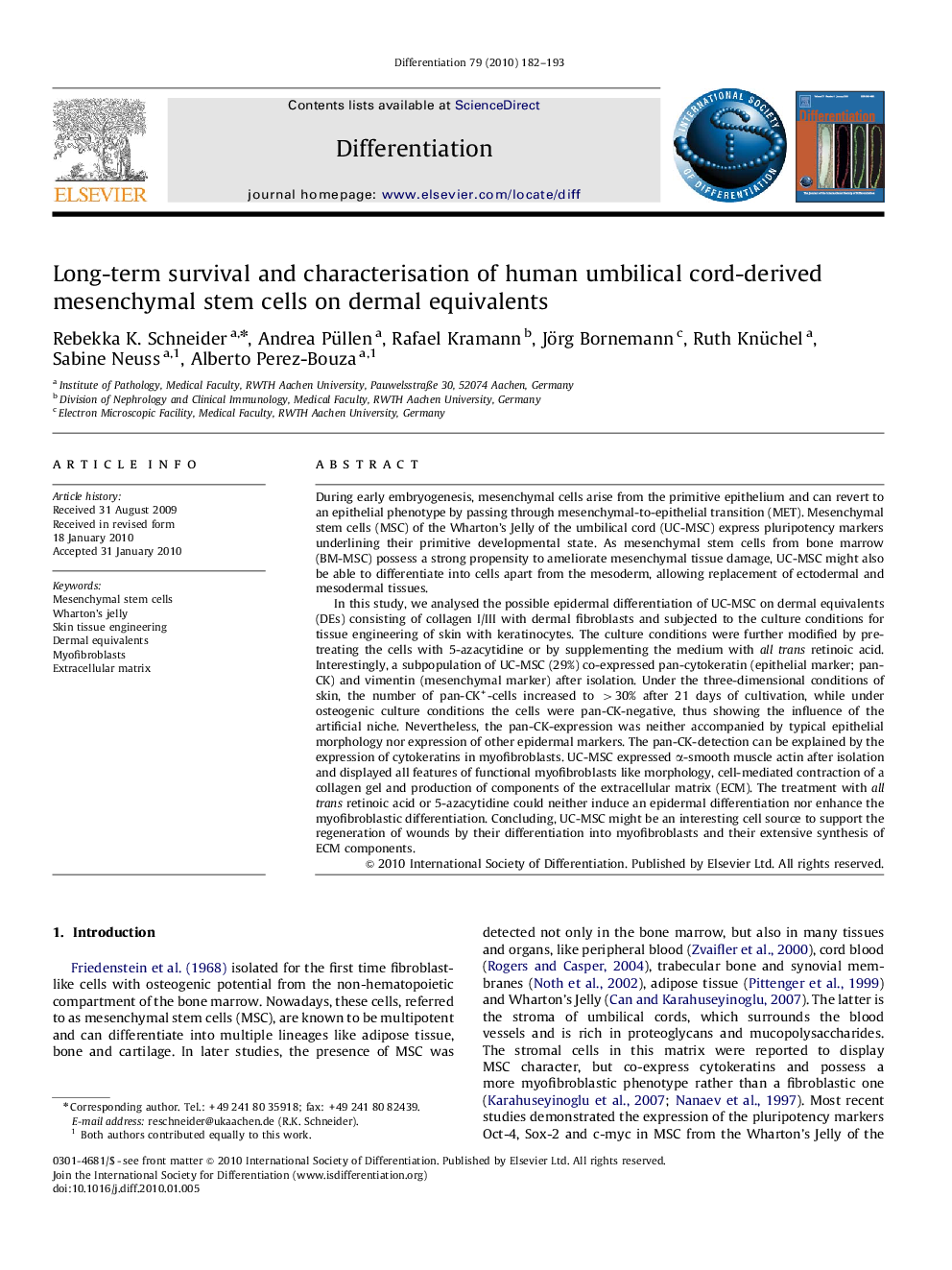| Article ID | Journal | Published Year | Pages | File Type |
|---|---|---|---|---|
| 2119638 | Differentiation | 2010 | 12 Pages |
During early embryogenesis, mesenchymal cells arise from the primitive epithelium and can revert to an epithelial phenotype by passing through mesenchymal-to-epithelial transition (MET). Mesenchymal stem cells (MSC) of the Wharton's Jelly of the umbilical cord (UC-MSC) express pluripotency markers underlining their primitive developmental state. As mesenchymal stem cells from bone marrow (BM-MSC) possess a strong propensity to ameliorate mesenchymal tissue damage, UC-MSC might also be able to differentiate into cells apart from the mesoderm, allowing replacement of ectodermal and mesodermal tissues.In this study, we analysed the possible epidermal differentiation of UC-MSC on dermal equivalents (DEs) consisting of collagen I/III with dermal fibroblasts and subjected to the culture conditions for tissue engineering of skin with keratinocytes. The culture conditions were further modified by pre-treating the cells with 5-azacytidine or by supplementing the medium with all trans retinoic acid. Interestingly, a subpopulation of UC-MSC (29%) co-expressed pan-cytokeratin (epithelial marker; pan-CK) and vimentin (mesenchymal marker) after isolation. Under the three-dimensional conditions of skin, the number of pan-CK+-cells increased to >30% after 21 days of cultivation, while under osteogenic culture conditions the cells were pan-CK-negative, thus showing the influence of the artificial niche. Nevertheless, the pan-CK-expression was neither accompanied by typical epithelial morphology nor expression of other epidermal markers. The pan-CK-detection can be explained by the expression of cytokeratins in myofibroblasts. UC-MSC expressed α-smooth muscle actin after isolation and displayed all features of functional myofibroblasts like morphology, cell-mediated contraction of a collagen gel and production of components of the extracellular matrix (ECM). The treatment with all trans retinoic acid or 5-azacytidine could neither induce an epidermal differentiation nor enhance the myofibroblastic differentiation. Concluding, UC-MSC might be an interesting cell source to support the regeneration of wounds by their differentiation into myofibroblasts and their extensive synthesis of ECM components.
